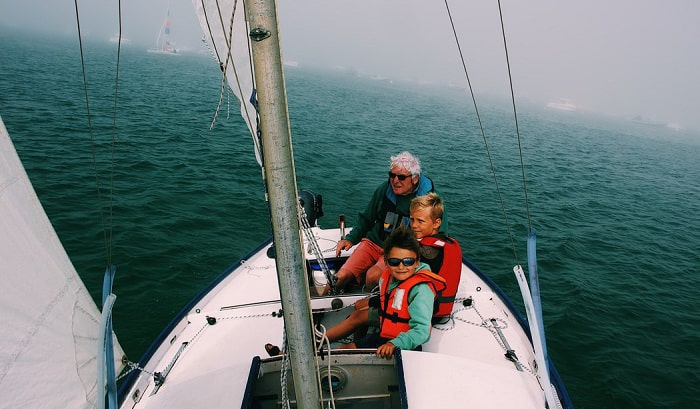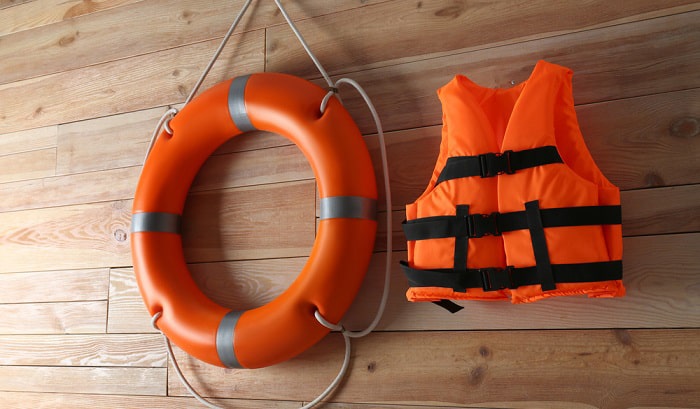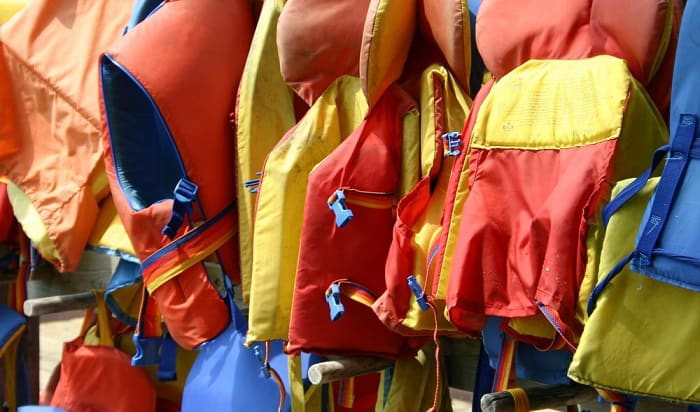You already know the importance of personal flotation devices, but do you know where is the best place to put PFDs while you are out on your boat? It may surprise you that many boat owners do not know where to place their PFDs, especially first-time boaters. The answer is that you should put PFDs where it is visible and easily accessible, for example, the top deck.
Worry no more because I will share the best place to secure personal flotation devices every time you go boating.
Table of Contents
What is a PFD
Let us take a refresher course on what a PFD is before I share where you should put these devices in your boat.
A personal flotation device is something you wear to keep you stay afloat in calm water. It can come in different sizes, depending on a person’s weight and body size. They can also have various levels of protection, allowing the wearer to stay afloat.
PFDs are suitable for recreational boating and for people who are confident about their swimming skills.
How about Life Jackets
Many people think a PFD is the same as a life jacket. After all, they look alike, and their differences are very subtle.
However, life jackets offer better protection than standard PFDs. Whereas a PFD will only keep you afloat in calm waters, a life jacket can buoy you on the water’s surface, even in rough seas.
The difference does not end there. Life jackets can also work on unconscious wearers. Its design allows the life jacket to turn a person facing down to face the sky and breathe better.
Life jackets are also more buoyant than PFDs, with most of the buoyant material on the chest panel. It ensures the wearer will have his back on the water and his head turned upward.
These life-saving jackets also have bright colors, often orange, yellow, or red. They must also have a whistle for attracting attention. The combination of sound signals and bright colors improves the likelihood of spotting a person in the water.
Children must always wear life jackets, not PFDs. It is also ideal for people with disabilities and those who cannot or do not know how to swim.
So, Where Should You Place PFDs
Maritime authorities say the best place to secure personal flotation devices is on the boat’s top deck where it is visible and easily accessible. There must be no other equipment, gear, or any obstructions on or around the PFDs.
It is imperative that PFDs are accessible to everyone on the boat. It is often a wise idea to store personal flotation devices in an open compartment or box, making them visible to everyone.
The whole point about PFDs is to wear them in an emergency. It would be difficult to do so if the PFDs are in a hidden location or obstructed by other items.
Ideally, you will want to wear a PFD as soon as you leave the dock and until you return to port.
What Other PFD Requirements You Should Know
Other than placing personal flotation devices on highly accessible areas of the boat, there are a few more things every responsible boater must know about PFDs.
1. A PFD for Everyone
Everyone aboard your boat must have a personal flotation device assigned to them. The PFDs must have a size appropriate to the wearer.
It is advisable to check the PFD’s fit before leaving the docks. If you are already out in the open sea and an emergency arises, it would be difficult to determine the correct size for each passenger.
2. All Children and Companion Animals Must Wear PFDs during the Boat Ride
According to the US Coast Guard, it is not compulsory for people older than 14 to wear PFDs throughout the boat ride’s duration.
Children below the age of 14 must wear PFDs at all times, even if the child is a champion swimmer in school.
If you go boating with your dog, you should also have a PFD for your pet.
3. Inflatable PFDs are a Big No-no in Some Situations
The Coast Guard does not recommend inflatable PFDs for children below the age of 16. You also cannot wear an inflatable PFD if you engage in impact activities, such as wakeboarding, water skiing, and jet skiing.
You can still enjoy these activities if you wear a foam PFD or other types of non-inflatable personal flotation devices.
4. Other Rules
The personal flotation device must be in good condition; otherwise, you risk your passengers’ safety.
Boats that are at least 16 feet long must also have a Type IV PFD. A buoyant cushion or swim ring is the most common example of a Type IV PFD. You do not wear this flotation device. Instead, you throw it in the water, allowing the person to hold onto it while pulling it toward the boat.
Conclusion
Knowing where is the best place to put pfds while you are out on your boat is essential to ensuring everyone’s safety. As a rule, you should place PFDs in a visible and accessible location, free from any obstruction. You will want everyone to get and wear their PFDs at a moment’s notice.

I am passionate about water sports and technical fields, so combining both makes me interested in making contents about boat accessories. With my partner, we went on many trips and sports games together, which led us to think about how we can spread our joys and passions to many people.



